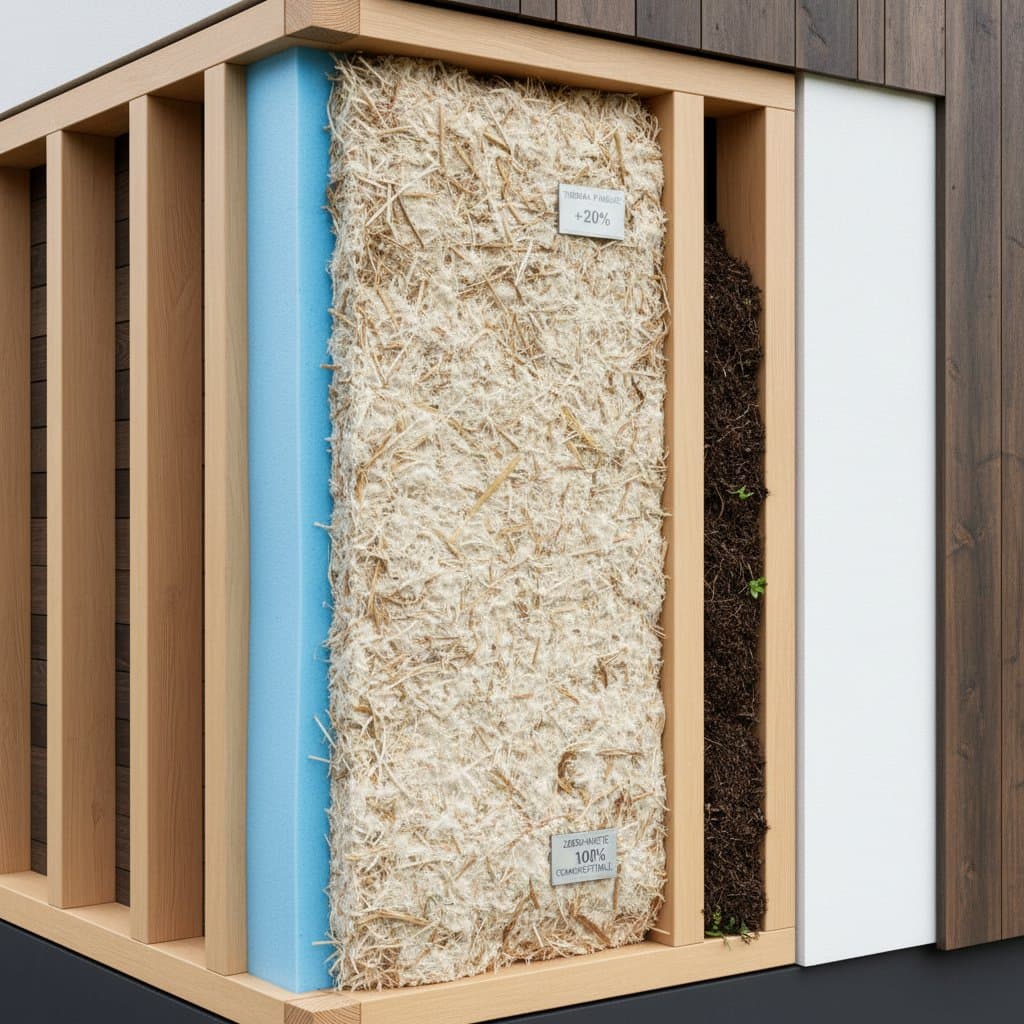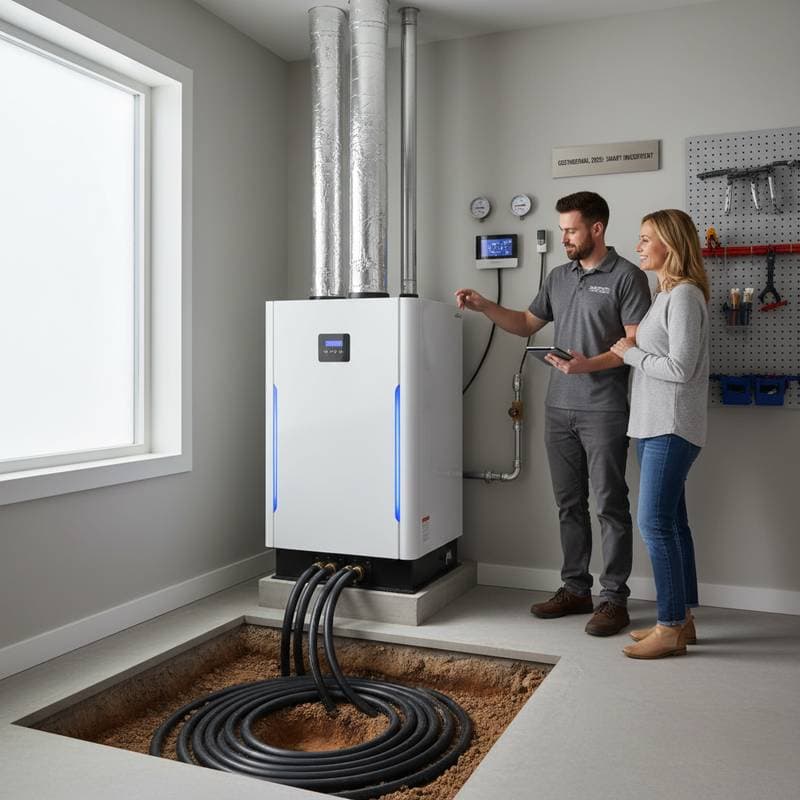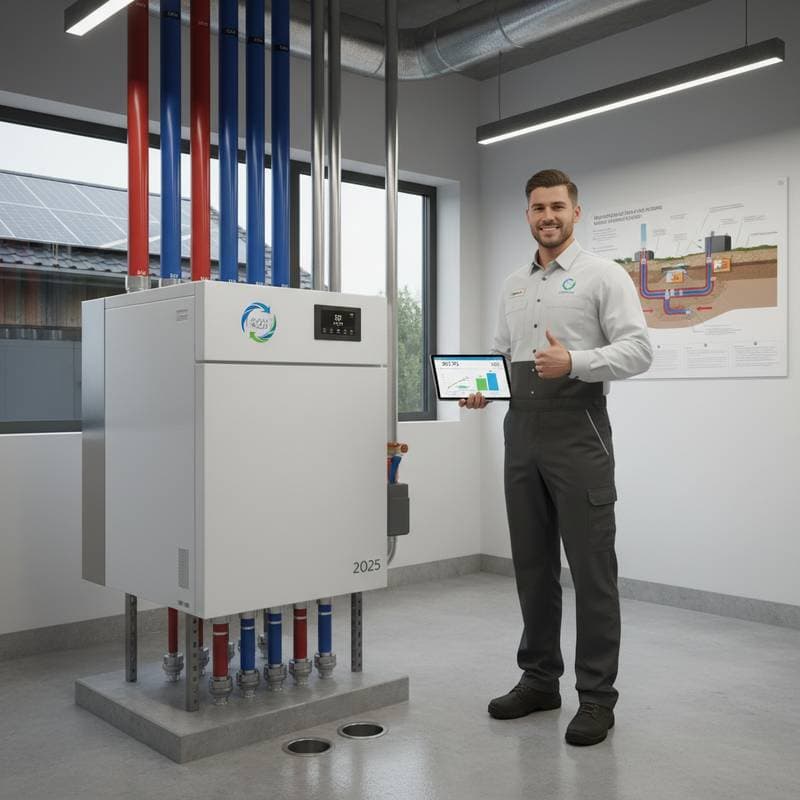Key Points
- Homeowners qualify for expanded federal tax credits on all-electric home upgrades, including heat pumps and EV chargers.
- These incentives support both new construction and retrofits, reducing barriers to electrification for existing properties.
- Layering federal credits with local rebates and utility programs lowers project costs by 30 percent or more.
- Consulting professionals guarantees compliance, optimizes savings, and improves overall energy efficiency.
Picture a Home That Works With the Planet
Imagine entering a residence where systems operate with seamless efficiency. The air remains fresh, temperatures stay consistent, and the noise from a traditional gas furnace belongs to the past. Residents charge vehicles, prepare meals on induction ranges, and rest assured that electricity from renewable sources powers the entire space.
As a green building professional, I have observed numerous homeowners hesitate over the prospect of all-electric systems. Concerns often center on initial expenses or uncertainties with tax incentives, alongside doubts about long-term benefits. Fortunately, recent federal tax credits simplify this process. Homeowners upgrading water heaters, replacing HVAC units, or constructing net-zero dwellings from scratch now face reduced financial burdens.
Why All-Electric Homes Are Gaining Momentum
Nationwide, increasing numbers of homeowners select all-electric setups to lower emissions, steady energy expenses, and elevate living comfort. This trend aligns with regional environmental goals, particularly in areas facing severe weather or compromised air quality. Systems such as heat pumps enhance indoor environments and respond effectively to varying climates.
Cost has historically posed the primary obstacle. Retrofitting often involves electrical rewiring, panel enhancements, or appliance swaps, which appear intimidating absent support. Tax credits address this by compensating adoption of sustainable technologies, offsetting setup fees, and elevating property worth over time.
The Opportunity: Tax Credits That Make Electrification Affordable
Current energy-efficiency programs feature substantial credits for renovations and builds alike. These measures promote national progress toward sustainable energy while alleviating homeowner expenses.
Qualified items include the following:
- Heat Pump Systems: Air-source and ground-source varieties earn credits up to 30 percent of costs.
- Heat Pump Water Heaters: Devices that draw heat from surrounding air qualify for comparable 30 percent credits.
- Induction Cooktops: Transitioning from gas cooking receives targeted credits to foster safer cooking areas.
- Electrical Panel Upgrades: Enhancements to accommodate increased loads qualify for credits.
- EV Chargers: Home installations for primary residences meet eligibility criteria.
Professionals advise maintaining thorough records of purchases and setups. Retain receipts, certifications, and contractor details to secure maximum credits.
Expert Steps to Maximize Your Incentives
1. Start With a Home Energy Audit
Initiate the process with a certified energy audit. This evaluation uncovers issues such as inadequate insulation, drafts, or obsolete equipment. Auditors employ methods like blower door assessments and infrared scans to locate energy loss points. Addressing these foundational problems maximizes the effectiveness of subsequent electric installations.
2. Prioritize High-Return Upgrades
Select modifications that yield the strongest returns by minimizing fossil fuel reliance. Typical priorities encompass:
- Exchanging gas furnaces for efficient heat pumps.
- Fitting heat pump water heaters.
- Enhancing insulation and duct sealing.
- Incorporating smart thermostats for precise regulation.
Such changes integrate to form a cohesive system that sustains performance across seasons.
3. Combine Credits With Rebates
Supplement federal benefits with utility and state offerings. For instance, a local provider might rebate $500 for a smart thermostat or $1,000 toward a heat pump. Stacking these with credits can slash total outlays by thousands.
4. Work With Certified Installers
Engage qualified experts versed in incentive protocols. Proper installation adheres to regulations and prevents errors. Documentation and sizing accuracy preserve credit eligibility and system reliability.
5. Plan for Future Electrification
Design electrical infrastructure for scalability, even with phased implementations. Installing a 200-amp panel or pre-wiring for solar integration minimizes future expenditures.
Real-World Example: From Gas-Dependent to All-Electric
A client in a suburban setting managed a home dependent on gas heating, water heating, and aging appliances, incurring about $3,000 in yearly energy costs. The transition involved a variable-speed heat pump, insulation improvements, and a heat pump water heater, resulting in a 40 percent bill reduction.
Incentives totaled over $7,000 from credits and rebates. Utility savings recouped residual costs within five years. The residence now functions silently, delivers uniform comfort, and emits fewer greenhouse gases.
Practical Considerations Before You Begin
Tailor the electrification strategy to individual circumstances. Key elements include:
- Upfront Costs: Full conversions for standard homes range from $15,000 to $30,000, with credits offsetting 25 to 30 percent.
- Timeline: Whole-home projects span weeks; isolated changes, such as water heater swaps, conclude in a single day.
- Energy Source: Integrating solar panels or community programs amplifies savings and dependability.
- Maintenance: Electric setups demand minimal upkeep compared to fuel-based alternatives, though yearly checks maintain efficacy.
- Resale Value: Efficient, electric-equipped properties attract quicker sales at premium rates.
Energy consultant Dana Lopez notes, “Electrifying your home is not just about technology. It is about comfort, health, and future-proofing your investment.”
Expert Tips to Boost Your Home’s Eco-Efficiency
- Upgrade Windows and Doors: Advanced glazing diminishes thermal demands, easing system workloads.
- Use Smart Controls: Automated devices for temperature and illumination refine daily usage patterns.
- Optimize Ventilation: Energy recovery ventilators preserve air quality while conserving energy.
- Monitor Energy Use: Digital tools and applications enable ongoing evaluation and refinement.
These enhancements cultivate a harmonious space prioritizing efficiency, well-being, and environmental stewardship.
Making It Happen
Electrifying a home involves deliberate steps, yet yields enduring advantages. Lower bills, purer air, and reduced emissions foster improved quality of life. Present tax credits position this as an opportune moment for action.
Connect with a qualified green building specialist through our platform for a complimentary review. Experts evaluate suitability, navigate applications, and confirm incentive qualifications. Guided implementation delivers sustained fiscal and ecological gains.
Homeowners who proceed promptly reap the greatest rewards. As energy landscapes evolve and innovations advance, all-electric residences shape sustainable futures. Initiate the transformation with targeted, efficient upgrades.
Frequently Asked Questions
Q: What qualifies as an all-electric home for tax credit purposes?
A: An all-electric home relies solely on electricity for heating, cooling, water heating, cooking, and vehicle charging. Properties that substitute all gas or oil components with electric equivalents access the complete incentive spectrum.










